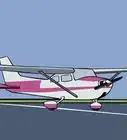wikiHow is a “wiki,” similar to Wikipedia, which means that many of our articles are co-written by multiple authors. To create this article, 42 people, some anonymous, worked to edit and improve it over time.
There are 7 references cited in this article, which can be found at the bottom of the page.
wikiHow marks an article as reader-approved once it receives enough positive feedback. In this case, 93% of readers who voted found the article helpful, earning it our reader-approved status.
This article has been viewed 391,227 times.
Learn more...
Getting a pilot’s license opens up doors of opportunities you may never have envisioned before. In the United States under the Federal Aviation Administration (FAA), you can get a Private Pilot License (PPL) which will allow you to fly different kinds of aircraft and carry passengers for pleasure and personal flights. You can upgrade this license to further advanced certificates and licenses.
There are many classes and categories for a PPL, but typically the average student starts in a small single engine airplane, so here are the basic steps to follow for getting your PPL for a single engine airplane.
Steps
-
1Organize an orientation flight. An orientation flight may be as simple as going to your nearest airport with a flight school. The staff are usually as enthusiastic to get you in an airplane as you are. The orientation flight exposes you to the experience of flying in an airplane and gives you a chance to evaluate yourself on how your body or mind responds (i.e. nausea, fear of heights.) Most of these sensations and symptoms are temporary, but it just depends on your body, determination, and your decision to continue.
-
2Obtain Student Pilot License and Third Class Medical. There is no minimum age requirement to begin flight training, however, you must be at least sixteen to fly solo for an airplane provided you have a license and a medical from a designated Aviation Medical Examiner (AME).
- Student Pilot License. To apply, you must comply with 14 CFR 61.83 You must be of the eligible age and read, speak, write and understand the English language.[1]
- Third Class Medical. Like the name implies, this is an examination of your physical state by an AME. A list of examiners in your area can be found on the FAA website.
Advertisement -
3Organize Your Plan. There are many ways to acquire an aircraft and a Certified Flight Instructor (CFI). You could know a generous aircraft owner and a family friend who happens to be a CFI or finding a local Fixed-Based Operator (FBO) with planes and instructors. Another option in enrolling in an accredited flight training program in a college environment if you are interested in both the license and a degree. There is nearly an infinite number of ways to find a plane and an instructor for you to receive flight training. The average cost of flight training is $9,900 through a flight school, so budgeting is very important. The cost of training can be reduced if you purchase your own aircraft, but buying an airplane is a large responsibility and can be very expensive. How long it takes to get a license can vary; for some people it can take weeks if they are prioritizing it, others can take a few months if the license is not thier main priority (due to school, marriage, work, etc.).
-
4Do your pre-solo flight training. Before your first solo, your CFI will train you to the standards outlined by 14 CFR 61.87. For a single engine land plane, only paragraphs (a), (b), (c), (d), and (n) apply.
- Aeronautical Knowledge.[2] Your CFI will administer a written test and then review the test with you and examine that you are competent to operate the aircraft by yourself. He may cover the physics of flight, the applicable regulations, airspace procedures, weather, landing techniques, aircraft specifications and the like.
- Maneuvers and Procedure for Pre-Solo Flight Training. There is a list of maneuvers he is required to at least demonstrate and some to have you perfect. They are specified under 14 CFR 61.87(d) and include pre-flight procedures, taxiing and ground operations, takeoff, turns, stalls, descents, landings, etc.[3]
-
5Do your post-solo flight training. After you solo, there are a few major flight training exercises left to complete. At this point, your CFI is now having you fulfill the Aeronautical Experience requirement found under 14 CFR 61.109(a). This is the bare minimum experience needed for a PPL. You must log at least 40 hours of flight time that includes at least 20 hours of flight training from an authorized instructor and 10 hours of solo flight training.[4] Flight training is not a race, and the average student pilot usually has 60 to 80 hours of total flight time when they apply for thier license. The flying requires at least the following:
- 3 hours of cross-country flight training...
- 3 hours of night flight training... that includes one cross-country flight... and 10 takeoffs and 10 landings... at an airport.
- 3 hours of flight training... on the control and maneuvering of an airplane solely by reference to instruments. This is flying with the human equivalent of horse blinders and a taste of flying under Instrument Flight Rules (IFR) as oppose to being under Visual Flight Rules (VFR) as you have previously been experienced with.
- 3 hours of flight training with an authorized instructor... in preparation for the practical test, which must have been performed within the preceding 2 calendar months from the month of the test. This is your practice Practical Exam with your instructor and gives you a chance to work out any bugs.
- 10 hours of solo flight time... with at least one solo cross country flight.
-
6Ground School. There is a written exam that needs to be completed to complete your training, and a list of topics that are covered are under 14 CFR 61.105. This training covers material found in the Federal Aviation Regulations (FARs) and the Aeronautical Information Manual (AIM). Usually, the material can be found in a complete study guide and with multiple choice questions that you may purchase. You need an endorsement from either your flight instructor or you can receive an endorsement from a Ground Instructor. After your instructor signs you off, take the written test which consists of 60 multiple-choice questions and can be taken at FAA testing centers or with licensed test providers (usually at the FBO where you are taking your flight training). More information about testing centers in your area can be found on the FAA website. You must score at least 70% to pass the written knowledge test. The test result is valid for two years for you to apply to get your license, otherwise you need to retake it.
-
7The Check Ride.[5] After your instructor feels you are ready and you are eligible under 14 CFR 61.103, you will receive an endorsement to complete your final exam or “check ride” accompanied by a Designated Pilot Examiner (DPE) who will ask you questions and assess your abilities. More information about DPEs can be found on the FAA website. There are two portions to this exam:
- Oral Exam.[6] The examiner will verbally ask you questions; questions about flight planning, aircraft systems, the weather, aircraft maintenance and records, operations, and even your judgement and decision making for a couple hours. It seems daunting, but just remember your training. Study guides for the oral examination can be purchased.
- Practical Exam.[7] The examiner will now observe your ability to operate an aircraft. So the same maneuvers and procedures you've practiced with your instructor he/she will observe and evaluate. He/she may even simulate an emergency situation that you will have to react and respond to. The flight portion may also last a couple hours as well.
- The exact requirements and material are contained in an FAA document called the Airman Certification Standards (ACS) found on the FAA website.
-
8Congratulations! When you pass the flight exam, you will receive your PPL. It will be a temporary paper license you receive on the day of the exam while the paperwork for your actual license is processed. This allows you to pilot a single-engine aircraft in good visibility during the day or at night as long as you abide by the FARs pertaining to your license.
Community Q&A
-
QuestionHow old do I have to be to get a pilot's license?
 Community AnswerYou can begin flight training at any age; however, to fly solo in the aircraft you need to be at least 16 years old. To be eligible for a private pilot certificate, you must be at least 17 years old. There is no upper age limit to beginning your flight training.
Community AnswerYou can begin flight training at any age; however, to fly solo in the aircraft you need to be at least 16 years old. To be eligible for a private pilot certificate, you must be at least 17 years old. There is no upper age limit to beginning your flight training. -
QuestionHow many exams do I have to take to get my private pilot's license?
 DanoyachtcaptTop AnswererYou need to take one knowledge test and one flight test.
DanoyachtcaptTop AnswererYou need to take one knowledge test and one flight test. -
QuestionIs it possible to own a plane without owning an air strip?
 DanoyachtcaptTop AnswererYes, you can hanger it or tie it down at a nearby airport.
DanoyachtcaptTop AnswererYes, you can hanger it or tie it down at a nearby airport.
References
- ↑ https://www.faa.gov/pilots/become/student_cert/
- ↑ https://www.faa.gov/regulations_policies/handbooks_manuals/aviation/phak/
- ↑ https://www.faa.gov/documentlibrary/media/advisory_circular/ac_61-65g.pdf
- ↑ https://www.law.cornell.edu/cfr/text/14/61.109
- ↑ https://www.faa.gov/news/safety_briefing/2012/media/JanFeb2012Score.pdf
- ↑ https://www.faa.gov/pilots/become/knowledge/
- ↑ https://www.faa.gov/pilots/become/practical/
-Step-1.webp)
-Step-3.webp)
-Step-13.webp)
-Step-7.webp)
-Step-12.webp)
-Step-6.webp)
-Step-11.webp)
-Step-5.webp)
-Step-15.webp)
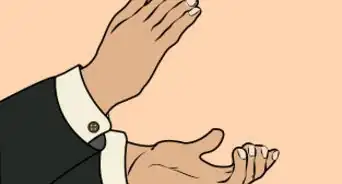


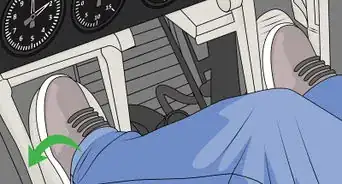

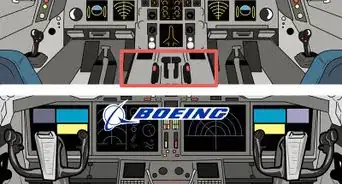

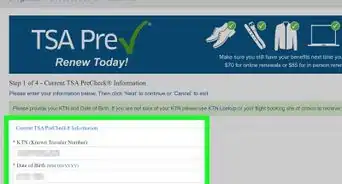
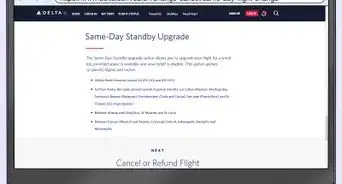
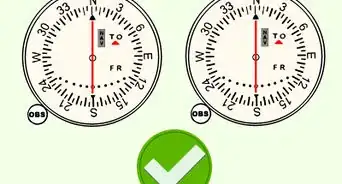
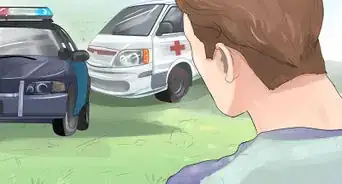
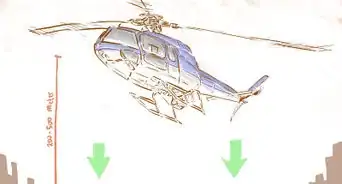
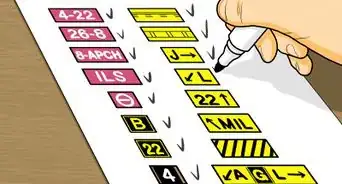









-Step-15.webp)

